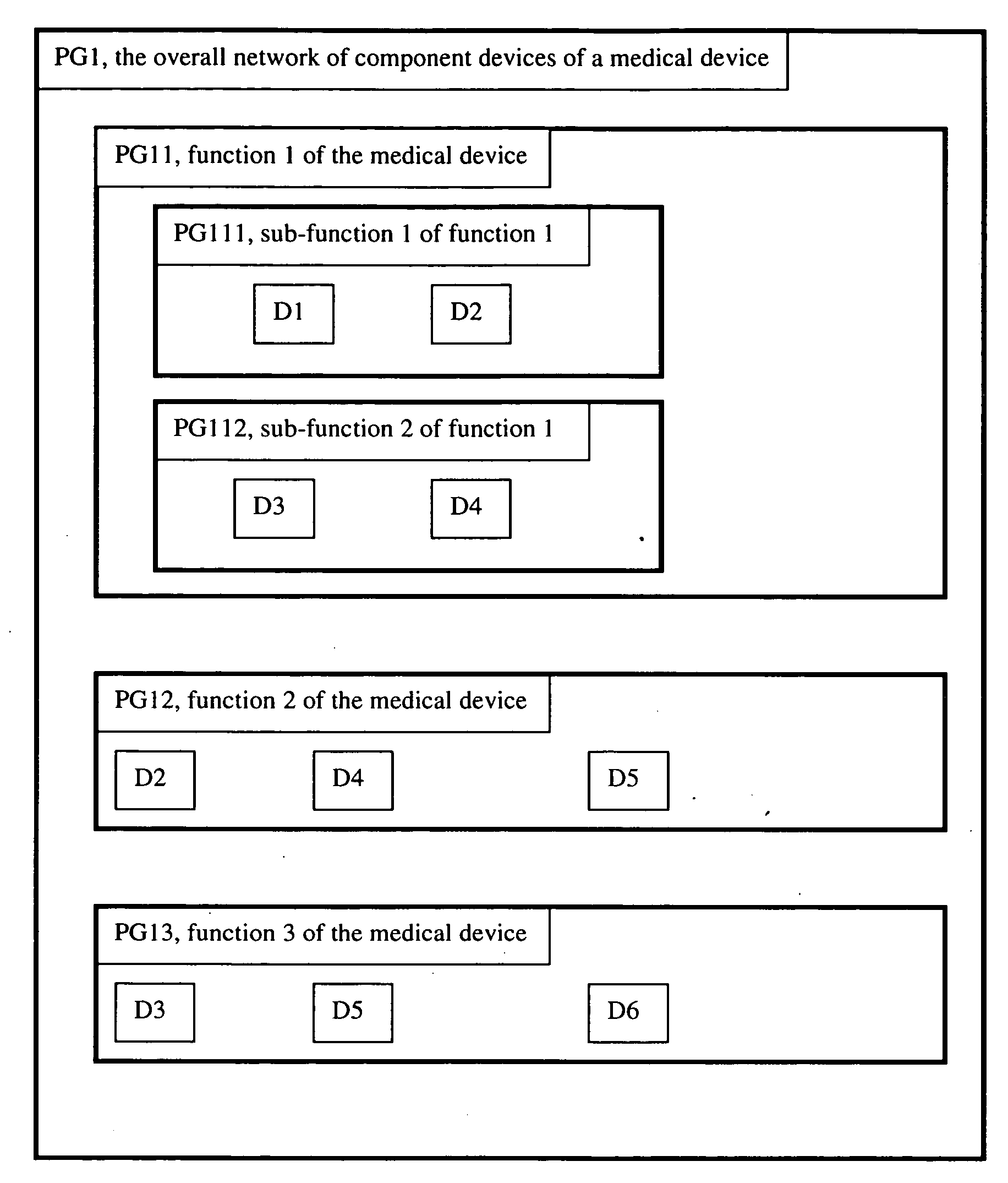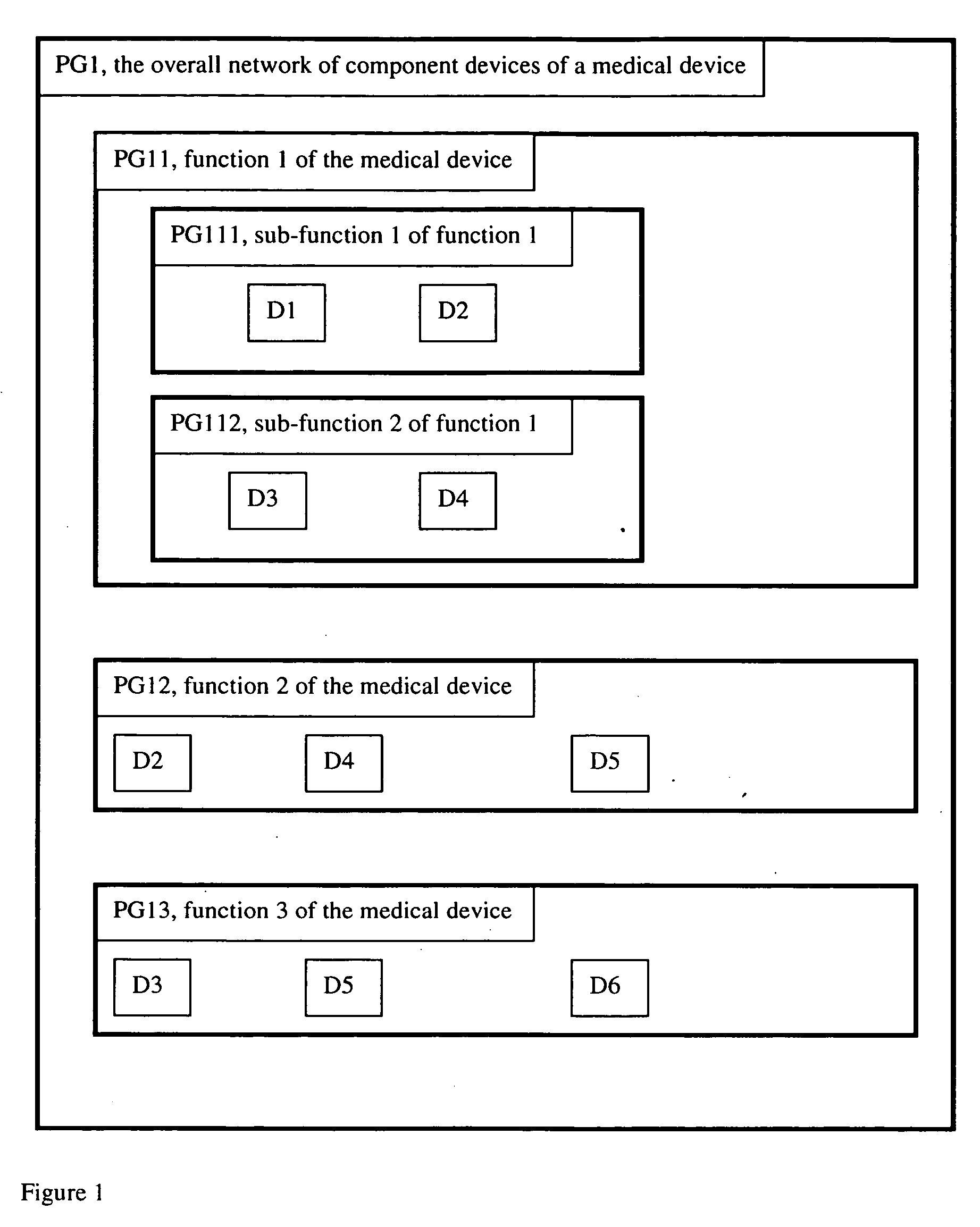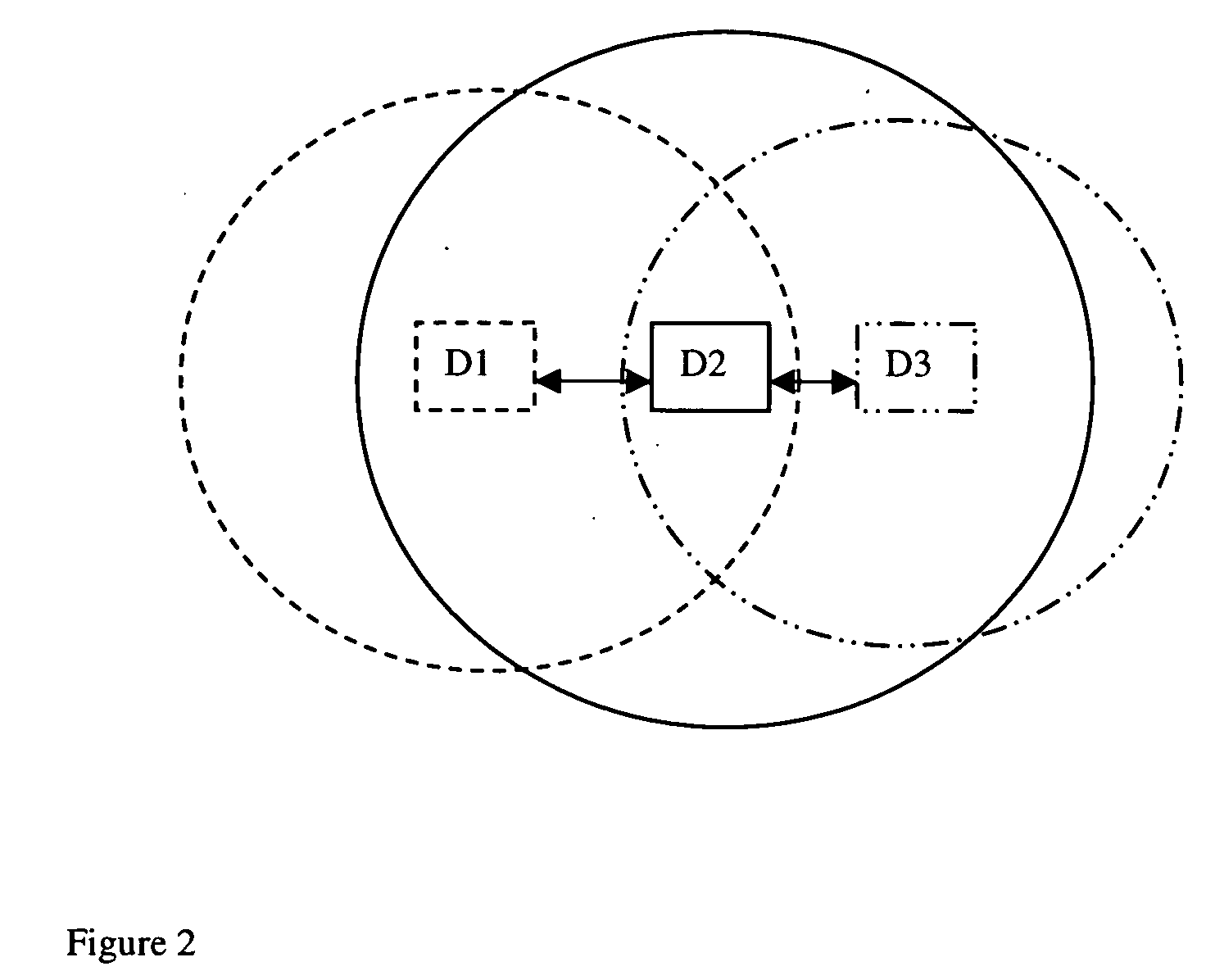Systems and methods for sensing physiologic parameters of the human body and achieving a therapeutic effect
- Summary
- Abstract
- Description
- Claims
- Application Information
AI Technical Summary
Benefits of technology
Problems solved by technology
Method used
Image
Examples
Embodiment Construction
[0048] The systems and methods of the invention described herein comprise a medical device that is intended to approximate the cellular structure of an anatomical organ or organs, for example, of a living being. The medical device is comprised of two or more relatively simple component devices that self-organize into various levels to hierarchically arrange a network of the component devices. The hierarchical network performs a medically relevant task or function, such as the delivery of a therapeutic effect to a patient, upon completion of tasks or functions associated with the various levels of the hierarchical network. Each device thus contains data, algorithms and / or protocols that enable the devices to process some or all of the data or information sensed, stored and distributed within the network, to exchange, modify or reconfigure some or all of the data, and to autonomously allocate data storage, computational, communication, energy supply, timing, sensory and / or therapeutic...
PUM
 Login to View More
Login to View More Abstract
Description
Claims
Application Information
 Login to View More
Login to View More - R&D
- Intellectual Property
- Life Sciences
- Materials
- Tech Scout
- Unparalleled Data Quality
- Higher Quality Content
- 60% Fewer Hallucinations
Browse by: Latest US Patents, China's latest patents, Technical Efficacy Thesaurus, Application Domain, Technology Topic, Popular Technical Reports.
© 2025 PatSnap. All rights reserved.Legal|Privacy policy|Modern Slavery Act Transparency Statement|Sitemap|About US| Contact US: help@patsnap.com



